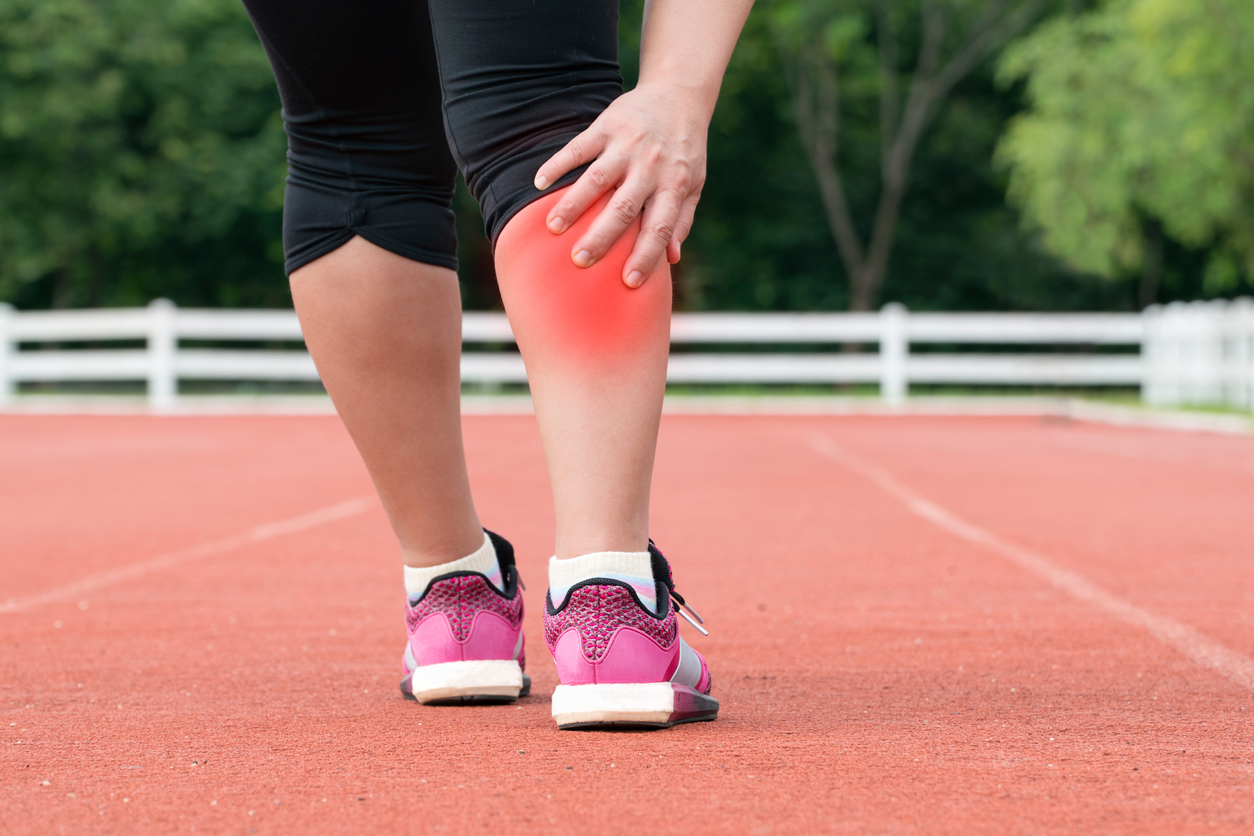Pain Behind the Knee and Calf – Visit an Orthopedic Surgeon or Vascular Surgeon

Pain behind the knee and calf can make it difficult to walk or sit for long periods. Depending on what your pain is like and where you feel it, you might have a vascular or orthopedic condition.
Read on to learn more about the different conditions that can cause pain in the knee or calf.
Vascular Conditions
Vascular conditions affect the circulatory system. With the femoral artery running in the thighs, the popliteal artery in the knees, and the tibial artery in the legs, you’ll find several crucial components of the circulatory system in the legs.
Is It Vascular Pain?
Vascular conditions typically create a painful and heavy sensation in the legs. Because a vascular issue can affect circulation, you might experience numbness or a tingling sensation. Your legs might also feel cold.
Typically, a blocked artery will cause pain when you walk and stop hurting if you rest. You might experience cramping, notice bruising or a change in skin color, and even lose some of your muscle mass.
Peripheral Artery Disease
Peripheral artery disease or PAD is a condition that develops when fat builds up in your arteries and limits circulation. It’s similar to heart disease, but it affects your limbs. It’s a common health problem, with 6.5 million Americans over 40 suffering from PAD.
Risk factors like high blood pressure, diabetes, smoking, or aging can make you more likely to develop this condition.
Diagnosis and Treatment
A physician can diagnose PAD based on the symptoms you report on a screening assessment. They might also look for changes of appearance in your legs and measure your blood pressure at the ankle to compare it to the pulse they’re reading in your arm to see if there is a difference.
The treatment depends on the stage of the disease. Some lifestyle changes to get your cholesterol levels under control or smoking cessation can be sufficient.
However, advanced cases will require surgery. A vascular surgeon can perform bypass surgery to reroute the blood flow and get past the clogged artery.
Orthopedic Conditions
Orthopedic conditions refer to issues that affect bones and muscles. Pain behind the knee and calf can indicate an orthopedic condition, such as a torn muscle, damaged tendon, or inflamed articulation.
What Does Orthopedic Pain Feel Like?
Symptoms can vary depending on whether you have an injured muscle, joint, or ligament:
- You will feel joint pain in the knee, and you might experience soreness, or feel that your knee is stiff. Swelling can also happen.
- If you tear a muscle in your leg, you’ll likely experience a burning sensation. You can feel sharp pain or a steady ache.
- Ligament pain can result in a stretching sensation. It can feel deep or sharp.
What Causes Orthopedic Conditions?
Orthopedic conditions often stem from an injury or repetitive movements. Athletes are more likely to suffer from orthopedic conditions, but anyone can tear a muscle or damage their knee by twisting their leg the wrong way or overextending it.
Ligament Tears
The patellar tendon, anterior cruciate ligament, and medial collateral ligament play a crucial role in stabilizing your knee. You can overextend any of these tendons by twisting your knee. Over-extending your leg can also cause a tear in your Achilles tendon behind your calf.
You can also experience tendonitis if you overuse a tendon. Tendonitis happens when a tendon becomes inflamed, often due to performing repetitive movements.
Meniscus Tear
The meniscus is a layer of cartilage that protects your knee articulation from shocks. Tearing this cartilage can be very painful and limit your movements.
Meniscus tears often result from sudden twisting or rotating of your knee. It’s a common sports injury, but you can tear your meniscus by simply lifting something heavy.
Arthritis
Cartilage can wear away with age, resulting in arthritis. Some individuals also develop rheumatoid arthritis because of an inflammatory response in their joints. A painful and swollen knee can indicate arthritis, especially if it’s a chronic issue.
Muscle Tears
Tearing your calf muscles or damaging a thigh muscle can change how your knee responds. A torn muscle usually results from straining or overusing your muscles.
Between the gastrocnemius, soleus, and plantaris muscles located in the calf and the vastus lateralis and the quadriceps tendon connecting the thigh to the knee, many different muscles can cause pain behind the knee and calf.
Cysts
A Baker’s Cyst can appear in your knee if fluids pool inside of the joint. Baker’s Cysts are typically a complication of arthritis or a torn meniscus.
Diagnosis and Treatment
A physician can diagnose an orthopedic condition based on the symptoms you experience. An exam can reveal symptoms like swelling in the knee or spasms in a torn muscle.
The good news is that orthopedic injuries often heal on their own. You should limit physical activity and get plenty of rest. Elevating the leg to limit blood flow can help with swelling, and so can compression. You can also apply ice to numb the pain and help with inflammation, but you might also find that heat treatments can help.
If the pain doesn’t disappear or gets worse after a few days, you might need to see an orthopedic surgeon. A surgeon can use sutures to repair a torn meniscus or tendon. Sutures can also help severe muscle tears heal.
For those who suffer from severe arthritis, an orthopedic surgeon can repair or replace a joint. Physical therapy and anti-inflammatory medication can also help chronic arthritis.
Conclusion
Pay attention to the symptoms you’re experiencing to determine if you have a vascular or orthopedic condition. If you have an orthopedic condition, you can manage symptoms at home and wait for your leg to heal. If the pain doesn’t go away, you should seek medical care.
If you’re experiencing vascular symptoms, you should schedule an appointment with a physician or a specialist. Unlike orthopedic conditions, vascular conditions will not heal on their own and will require some lifestyle changes or a more advanced treatment like surgery.

